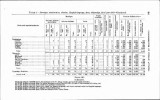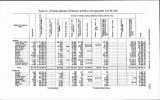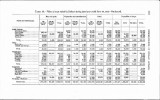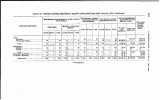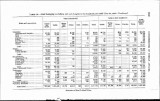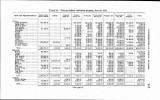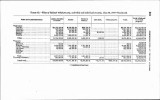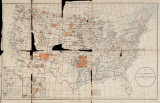| OCR Text |
Show COMMISSIONEB OB INDIAN AFFAIRS. 19 Indian families for living in sanitary homes. Only in these wayii can the day of the Indians' emancipation from national guardianship and of economic, social, and political independence be sped, and the obligation that is upon us of affording the Indians the same oppor-tunities, rights, and privileges as other Americans be discharged. The campaign for good health and physical efficiency among the Indians has continued with increased momentum along the lines out-lined in my annual report of last year. With the small force and inadequate funds at our disposal we have endeavored to meet exigencies as they arose; have attempted to stem the tide of disease, and in addition have been gathering such data as would enable us to impress the Congress with the need of money enough to make a complete medical survey of the whole field, and to increase and organize a medical corps for a house-to-house campaign against disease throughout the service. On the basis of the data so far obtained the President sent a special message to Congress strongly urging this action. The Presi-dent's message and the estimates submitted are as follows: To the Senate and House of Rwresentatiues: The present conditions of health on Indian reservations and in Indian schools are, broadly speaking, very unsatidactory. In many parts of the Indian coun-try infant mortality, tuberculosis, and disastrous diseases generally prevail to an extent exceeded only in some of the most insanitary of our white rural die tricts and in the worst slums of our large cities. The death rate in the Indian country is 35 per thousand, as compared with 15 per thonsand-the average death rate for the United States as a whole. The average death rate in some of the healthiest of our cities is as low as 12 per thousand. ?To exact figures are yet available for infant mortality among Indians, but fleld stildies now being made show that while proportionately more Indian babies than white babies are born, very many more Indian babies die. Last year, of over 42,000 Indians examined for disease, over 16 per cent of them had trachoma, a contagious disease of the eye, frequently resulting in blindness, and so easily spread that it threatens both the Indian communities and all aeir white neighbors. It is n disease so serious that at no port of entry in this country is the immigrant with trachoma allowed to land. On the Kiowa, Comanche, and Apache Reservations 71 per cent of the school children hare trachoma. The curing of this disease frequently requires years of con-stant care. Of the 40,000 Indians examined, 6,SW had tuberculosis. On the White Earth Reservation, in Minnesota, a house-to-house canvass in 1910 and 1911 revealed that of 3,840 Indians 600 had tuberculosis. An examination of half the Indians on the Blackfeet Reservation, Mont., shows that one-third of that number have tuberculosis. Of the total population of the Colorado River Reservation, Ariz., 20 per cent have tuberculosis. At the school of the Mew-lero Reservation, in New Mexico, where climatic conditions are ideal, 5 per cent of the children in school have tuberculosis. Of the 7,000 Indians of the Pine Ridge Reservation, S. Dak., over one-fourth have tuberculosis. Even in |






















































































